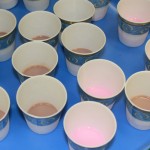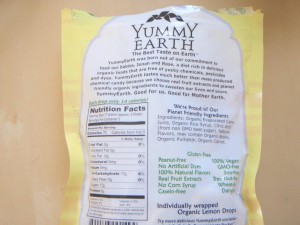I was so excited to hear that the FDA was taking on the issue of food dyes and considering banning them or requiring a warning label. People deserve to be protected from foods that cause such havoc in young brains.
Unfortunately, the FDA voted 8 to 6 last week not to ban artificial food dyes or to require that products containing them warn of a possible risk of ADHD.
At least the FDA recommended that further research into food dyes and hyperactive behavior is warranted. Those of us whose diets consist mostly of whole foods in their (relatively) natural states know how different our children act when they eat even refined sugar or chocolate. Add in artificial colorings, and sometimes it appears as though we have completely different children on our hands. Unfortunately, many children are exposed to these dyes on a regular basis, which means no one really knows how they might feel and act if they weren’t taking chemicals into their bodies night and day.
Before the FDA hearings, Washington Post columnist Petula Dvorak raised issues of economic disparity, pointing out that non-dyed individual yogurts cost a whole lot more than ones with dyes. For parents who follow the marketing, dyed food often goes hand-in-hand with “lunch” or “snack”-sized items emblazoned with characters and geared toward children.
Dvorak pointed out that not a whole lot of folks have the time to prepare individual servings with safe color substitutes like beet extract, even if they had the money. So a ban from the FDA would be the easiest way to get junk out of kids’ diets.
But since a ban is not on the horizon, and there also won’t be a warning label, it’s more important than ever for parents who can take the time and do have the money to consistently prepare healthy foods for their children to do so. It’s always important for the health of their children, but it sets an example so that children who know nothing different at home will at least have exposure to food that is safe. If your child learns about artificially-colored food from the girl sitting next to him with the Dora the Explorer yogurt, she can learn from him about real food.
And real food does taste good. As long as our children grow up with their palettes used to food that comes from the earth, they are less likely to develop a taste for the fake. Dvorak referenced the impracticality of coloring yogurt with beet juice, which I guess might start to seem necessary if older kids want to keep up with the Joneses. But wouldn’t it be nice if kids just stopped getting the idea that food has to look insane and if we instead just saw it as nourishing, the energy that is making up our very being? I loved how Bill Day explained this in his article in the Summer 2010 issue of Lilipoh magazine (“The World of Senses and Human Nutrition”).
How about instead of fake color, we just add more good food: antioxidant-rich fruit or even fruit-juice-sweetened jam?
Parents who understand the connections Dr. Feingold made over 30 years ago between dyes and behavior or who have read Dr. Rapp’s Is This Your Child? to see the before and after drawings of children exposed to dyes and allergens need to make sure that they don’t cave in to pressure for the neon birthday cake or the crazy colored Jello.
Ask ahead about cake or candy that might be served at a party, explaining that your child is sensitive to artificial dyes and you’re happy to bring an alternative. Offer to let the parents borrow your India Tree natural dyes made of vegetable ingredients. If asked, or if you get the right window, share suggestions of your favorite natural treats. No parent wants to feel judged or shamed, but sharing your hopes for a meltdown-free afternoon (or week, as some kids really hold onto food “hangovers”) should be appreciated if you enlist the other parents as allies. We all just want our kids to be happy and feel good, right?
And for them to grow into healthy adults. A lot of folks claim, “I ate plenty of junk food as a kid, and I turned out okay.” The problem with that argument is that junk food of the 1970s didn’t contain the amount of high fructose corn syrup (HFCS) that it does today, and today, plenty of things people think of as regular food (like yogurt) do have HFCS, and artificial colors, and artificial flavorings. So children not on whole foods diets are getting hit from all sides, all the time.
Giving kids chemically-altered food is not just letting them have a fun childhood. Keeping them healthy is our job, and there are plenty of ways to have fun with food that don’t require highly industrialized products.
Besides, plenty of adults are not “fine;” they have weight issues, depression or anxiety, skin problems, asthma, infertility, thyroid issues or a whole host of other problems. Food dyes are probably not a smoking gun for any one of these things, but in a holistic view, they are a likely a component.
Let’s keep both a meltdown-free day and a healthy adulthood in mind when we choose what to put in our children’s mouths and on their skin, which “eats” 80% of what we put on it!
See the full list of ingredients in Nesquik’s strawberry flavored milk.


Leave a Reply
You must be logged in to post a comment.